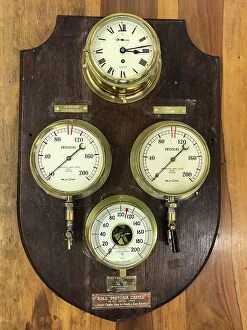Bulkhead Collection
The bulkhead, a term often associated with ships and tunnels, has played a crucial role in various historical events and engineering marvels
All Professionally Made to Order for Quick Shipping
The bulkhead, a term often associated with ships and tunnels, has played a crucial role in various historical events and engineering marvels. From the majestic Union Castle Line vessels like RMS Pretoria Castle to warship designs proposed by G. H. Davis, the bulkhead's significance cannot be overlooked. During the inquiry into the tragic loss of the Titanic, cross sections of the ship were meticulously examined, showcasing how these partitions served as vital compartments within its structure. Engravings and black-and-white photographs captured this detailed analysis that aimed to understand what went wrong on that fateful night. In another intriguing depiction, Captain Hallowell presented Nelson with a coffin placed against his cabin's bulkhead. This colorful lithograph symbolized both honor and grief in naval history. Beyond maritime applications, bulkheads also found their place in land-based projects. One such example was seen in London's Rotherhithe Tunnel where compressed air needed to be retained for construction purposes. The images from October 1906 showcased how these barriers ensured safety during tunneling operations. The Harland & Wolff Collection at National Museums NI further highlights the importance of bulkheads in shipbuilding. These artifacts provide insights into their design and implementation across different vessels throughout history. Even beyond Earth's boundaries, space shuttles relied on robust bulkheads to maintain structural integrity during missions. Whether it was launching satellites or conducting scientific experiments, these spacecraft exemplified how essential these partitions are even in outer space exploration. From safeguarding lives at sea to enabling groundbreaking engineering feats on land and beyond our planet's atmosphere, the versatile nature of bulkheads continues to shape our world today.










